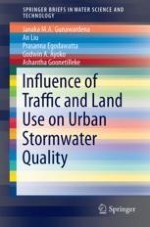This book presents a detailed analysis in relation to pollutant processes and transport pathways encompassing atmospheric pollutants, atmospheric deposition and build-up on road surfaces of traffic generated key pollutants. The research study undertaken by the authors created extensive knowledge relating to the relevant processes and establishing their relationships as a chain of processes. The information presented in this book was derived based on comprehensive experimental investigations including field sampling, laboratory testing, mathematical modelling and multivariate and univariate statistical data analyses. The knowledge presented will be of particular interest to readers such as stormwater treatment design specialists, decision-makers and urban planners since these outcomes provide practical suggestions and recommendations to effective urban stormwater treatment design.
